With the rapid development of the modern electronics industry, energy storage devices play a vital role in portable micro-sensors, nano-robots and micro-electromechanical systems. Direct ink writing (DIW)3D printingAs an emerging additive manufacturing technology, technology has convenient operation and flexible controllability, and has unique advantages in the structure and shape design of high-performance electrochemical energy storage devices. Two-dimensional MXene nanosheets are ideal electrode materials, and the abundant -O, -OH and -F functional groups on the surface endow MXene with excellent hydrophilicity and ink processability.However, most MXene inks have poor rheological properties and cannot meet3D printingDemand. In addition, the dried MXene nanosheets are prone to self-stacking, which is not conducive to ion transmission and diffusion, and further affects the electrochemical performance of the 3D printed device.
Recently, Professor Li Meichun and Professor Mei Changtong from Nanjing Forestry University published a titled “3D Printed Ti3C2Tx MXene/Cellulose Nanofiber Architectures for Solid-State Supercapacitors: Ink Rheology, 3D Printability and Electrochemical Performance in the internationally renowned journal Advanced Functional Materials. “The article. In this work, a series of cellulose nanofibrils (CNF) with different morphologies and surface charge densities were prepared from palm wood by adjusting the amount of oxidants used in the TEMPO oxidation process, which were used to improve the rheological properties of MXene ink and inhibit MXene. Self-stacking of nanosheets. Subsequently, combining 3D printing and freeze-drying technology, successfully customized a series of 3D porous structures with high shape fidelity and geometric accuracy, and constructed solid plug-in capacitors with excellent electrochemical performance. This work provides new ideas for the high-value utilization of nanocellulose and the personalized customization of electrochemical energy storage devices.
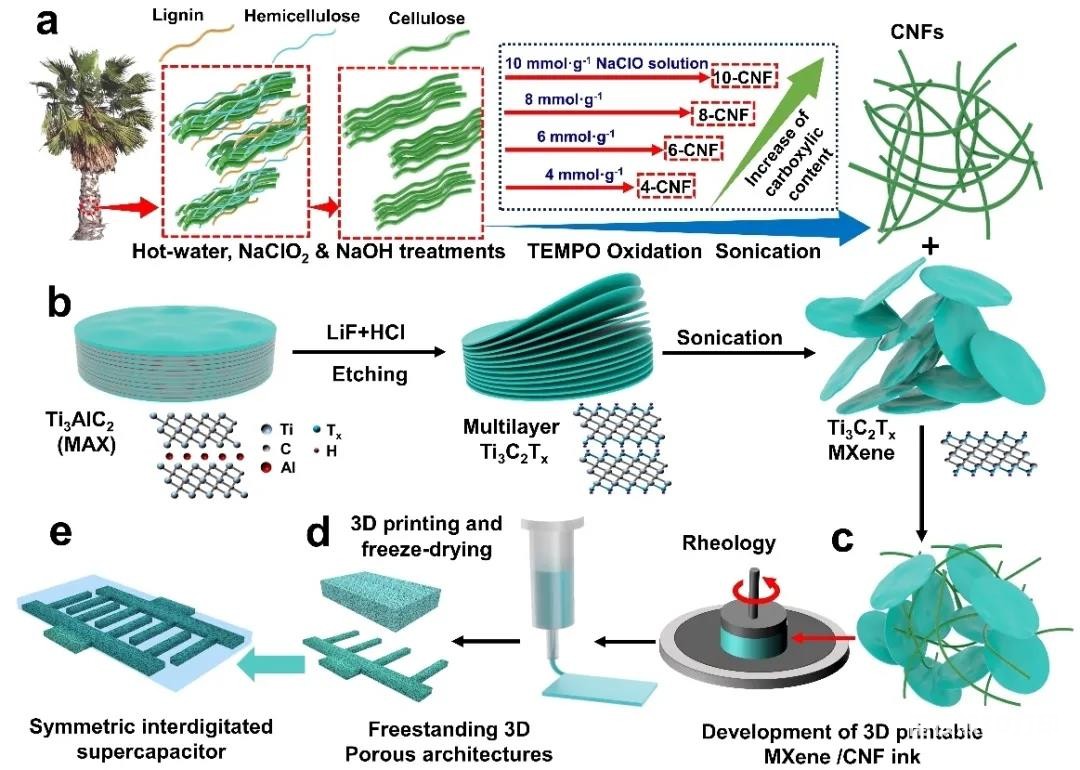
I. The controllable preparation of CNF and the rheological characterization of its suspension
Using the TEMPO-mediated oxidation method and controlling the amount of the oxidant sodium hypochlorite, a series of CNFs with different morphologies and surface charge densities were successfully prepared from palm wood. The increase in the amount of oxidant can increase the carboxyl content on the surface of the cellulose and produce stronger electrostatic repulsion, thereby promoting the degree of nanofibrillation of the cellulose, thereby increasing the viscosity and storage modulus of the CNF suspension. It is worth noting that when the amount of oxidant is increased from 8 mmol/g to 10 mmol/g, the diameters of 8-CNF and 10-CNF are not much different, and the viscosity and storage modulus of the two are also relatively close. Taking into account the cost of CNF preparation, the follow-up study chose 8-CNF as the rheology modifier of MXene ink. In addition, the steady-state shear test showed that the 8-CNF suspension has obvious shear thinning behavior and a wide viscosity range.
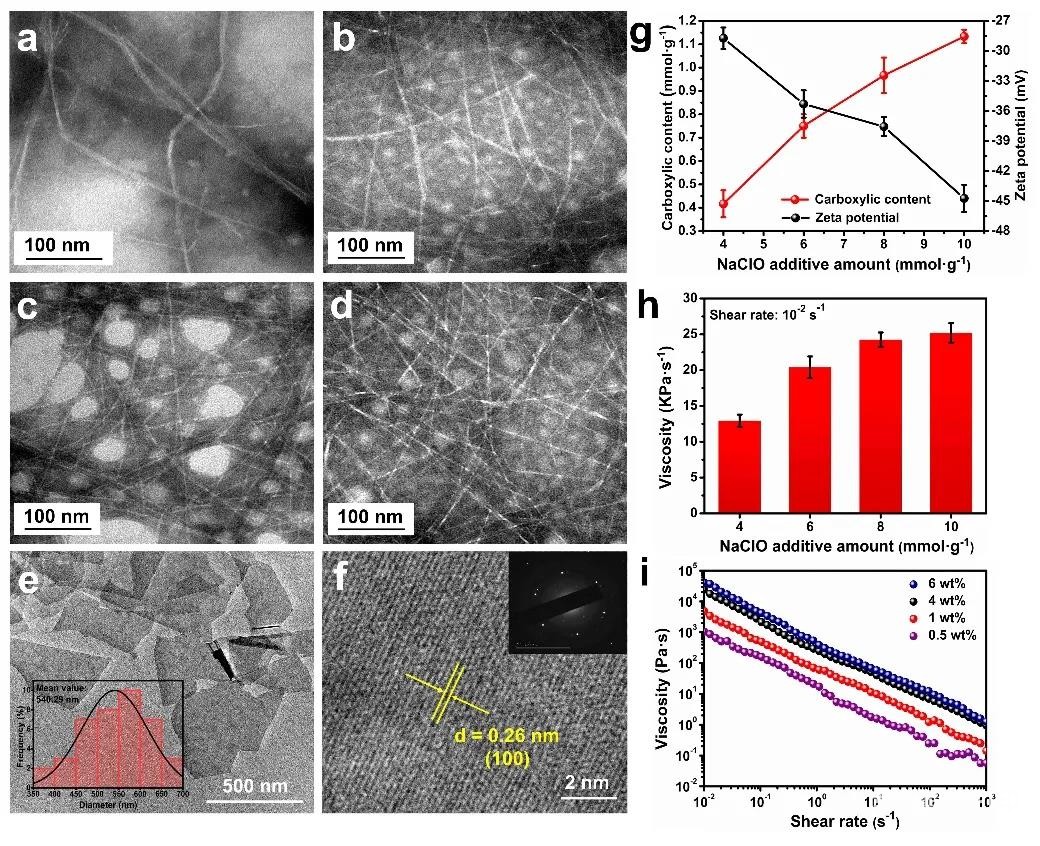
II. The rheological properties and printability of MXene/CNF composite ink
Using lithium fluoride and hydrochloric acid to generate hydrofluoric acid etching MAX precursor in situ to prepare MXene nanosheets, and then use 8-CNF to improve the rheological properties of MXene ink. MXene/CNF viscoelastic gel ink was prepared through a series of blending, concentration and homogenization. The rheological test shows that the one-dimensional CNF and the two-dimensional MXene form a gel network structure through hydrogen bonding, so that the composite ink has high yield stress and dynamic viscoelasticity, unique shear thinning behavior and excellent thixotropy. This gives the composite ink excellent 3D printability. It is worth noting that the solid content of MXene/CNF ink is only 8 wt%, which is much lower than the previously reported MXene ink for DIW printing. In addition, research on the printing process found that reasonably reducing the printing pressure and increasing the printing speed can effectively improve the precision of the printing filaments, and finally build a series of 3D gel structures with high shape fidelity and geometric accuracy.
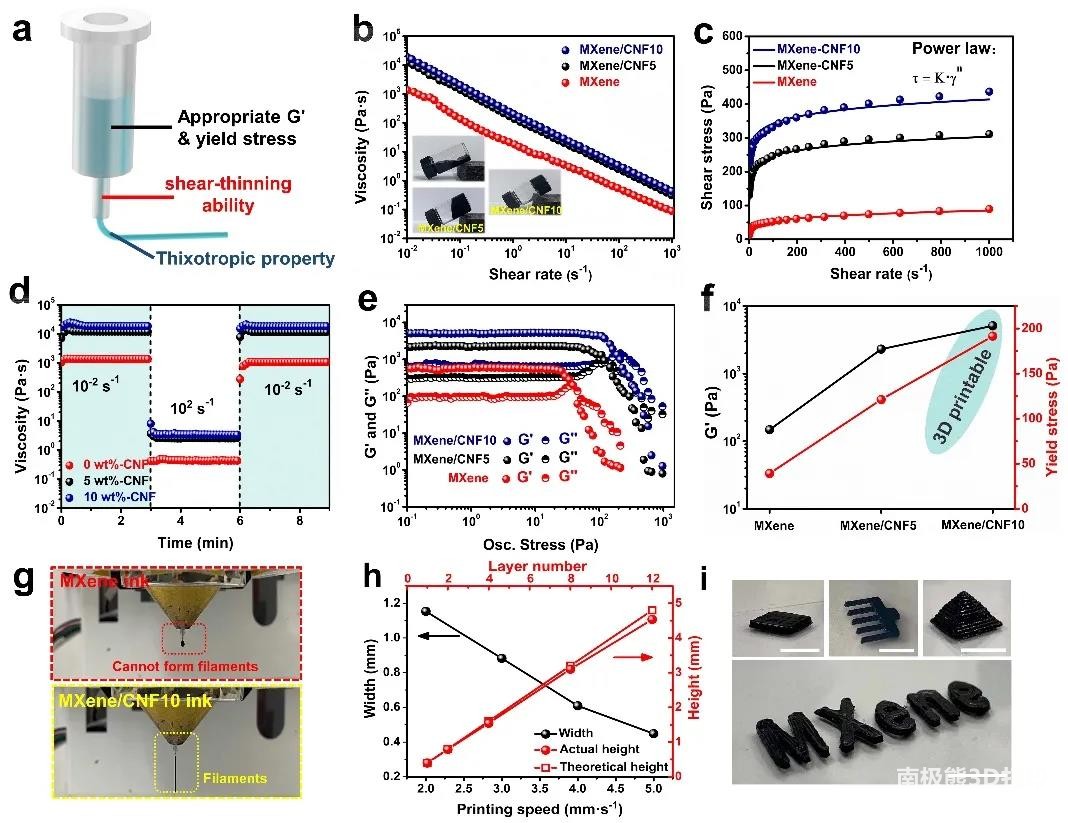
III. The microstructure of 3D printed MXene/CNF porous structure
After freeze-drying the printed gel structure, a self-supporting block of MXene/CNF with almost no shrinkage was obtained. The SEM test showed that there are porous structures on the surface and sides of the MXene/CNF block, and a three-dimensional interconnected porous network is formed inside. The BET test shows that the MXene/CNF block has a multi-level pore structure, which improves the surface area accessibility, reduces the stacking of MXene sheets, and provides an effective way for ion transmission and diffusion. Through XRD test, it was found that the introduction of CNF caused the (002) characteristic peak of MXene to shift to a small angle, which confirmed that CNF played an intercalation role. The XPS test proved that there is a hydrogen bond interaction between CNF and MXene.
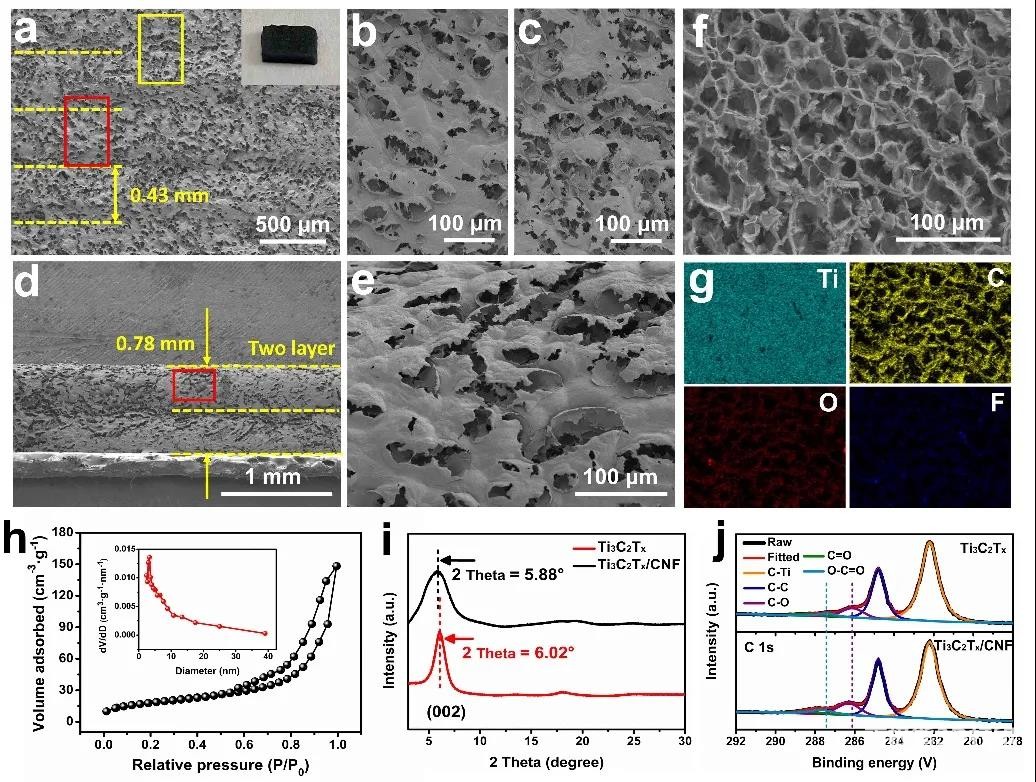
IV. Electrochemical performance of 3D printed symmetrical plug-in supercapacitors
The 3D printed MXene/CNF plug-in electrode was assembled into a solid supercapacitor device (SSC) and then tested for performance. SSC exhibits high area capacity (2.02 F·cm-21 mA·cm-2), excellent rate performance (1.14 F·cm-2@20 mA·cm-2), and good cycle stability. In addition, the device has an energy density of 101 μWh cm-2 at a power density of 0.299 mW cm-2, and a volume capacitance of 25.4 F·cm-3 at 1 mA·cm-2, showing excellent energy storage characteristics .
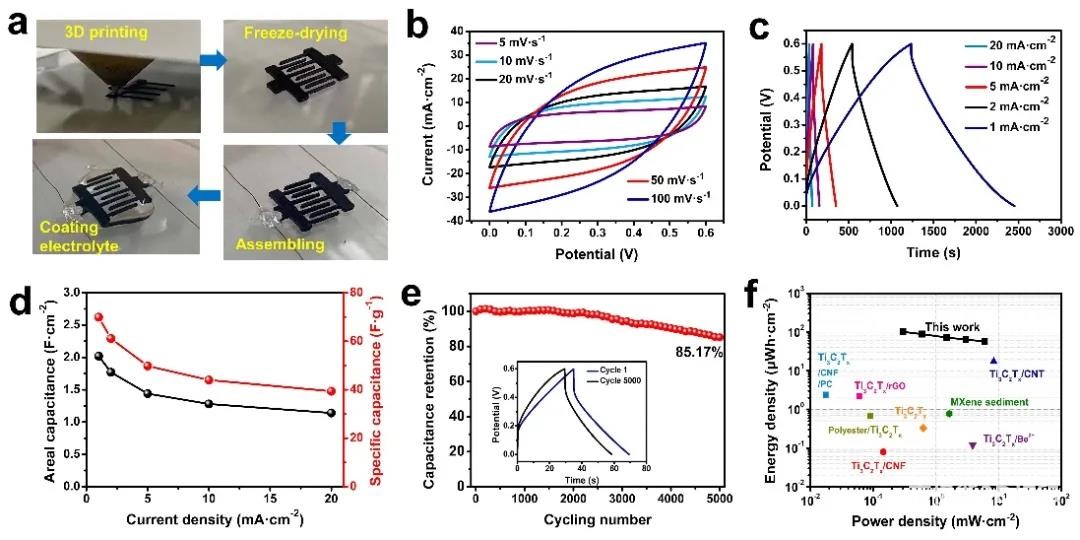
Original link: 3D Printed Ti3C2Tx MXene/Cellulose Nanofiber Architectures for Soild-State Supercapacitors: Ink Rheology, 3D Printability and Electrochemical Performance
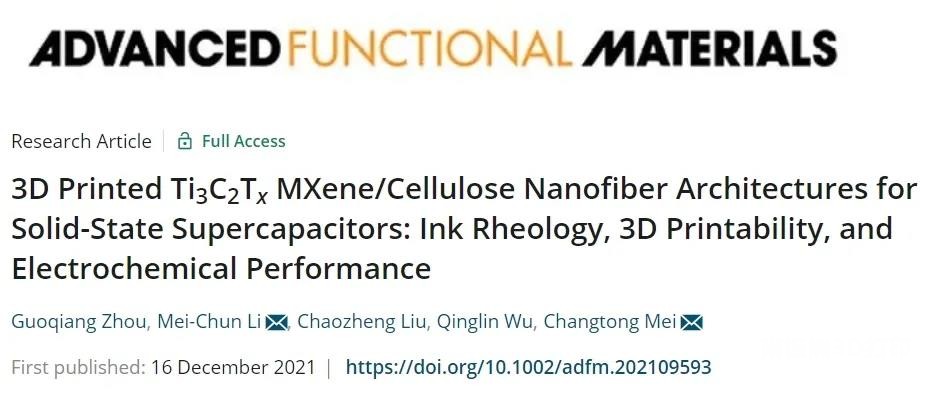
https://onlinelibrary.wiley.com/doi/10.1002/adfm.202109593
(Editor in charge: admin)


0 Comments for “Nanlin AF: 3D printed MXene/cellulose nanofibrils self-supporting porous structure for the construction of solid supercapacitors”